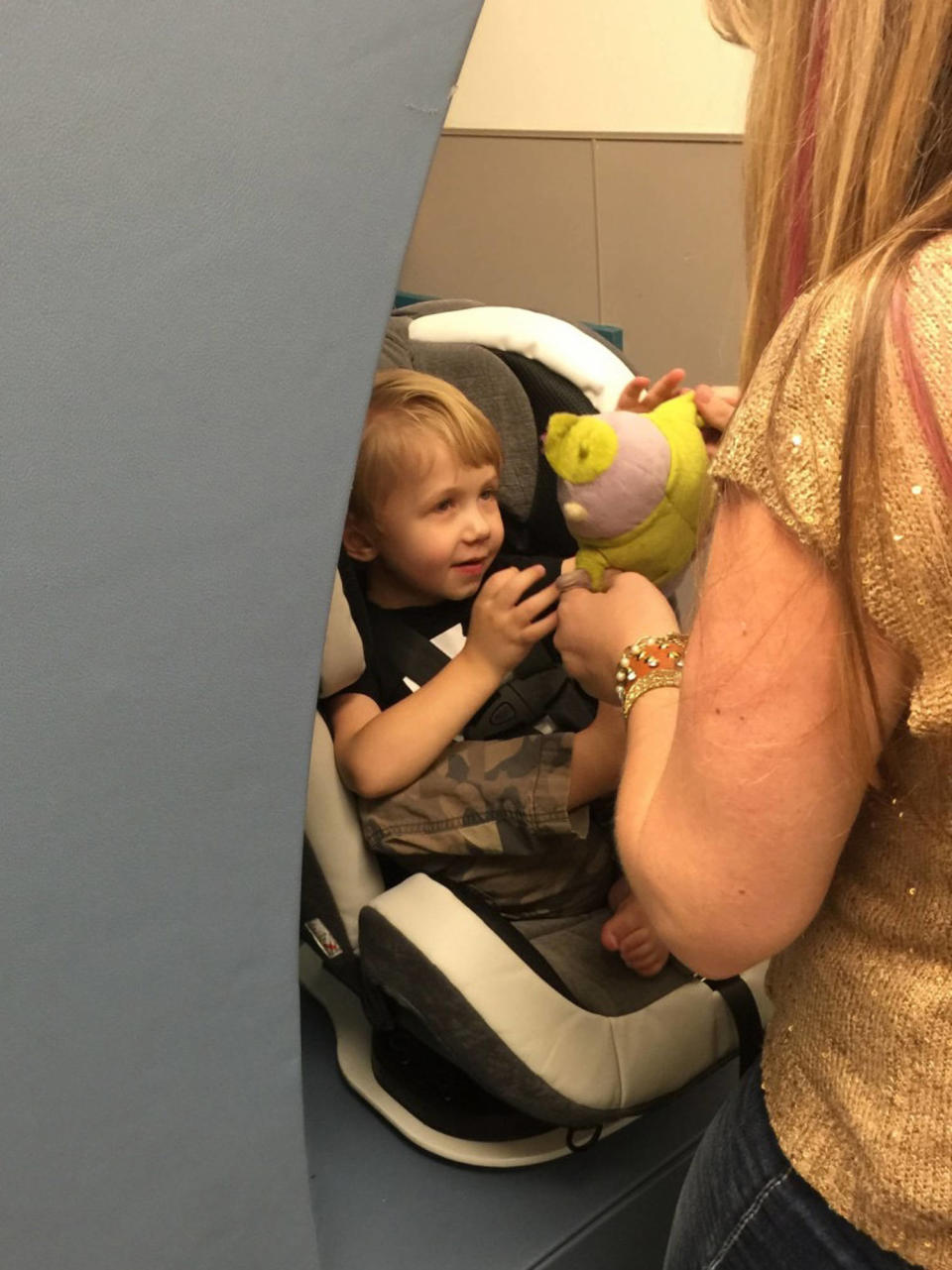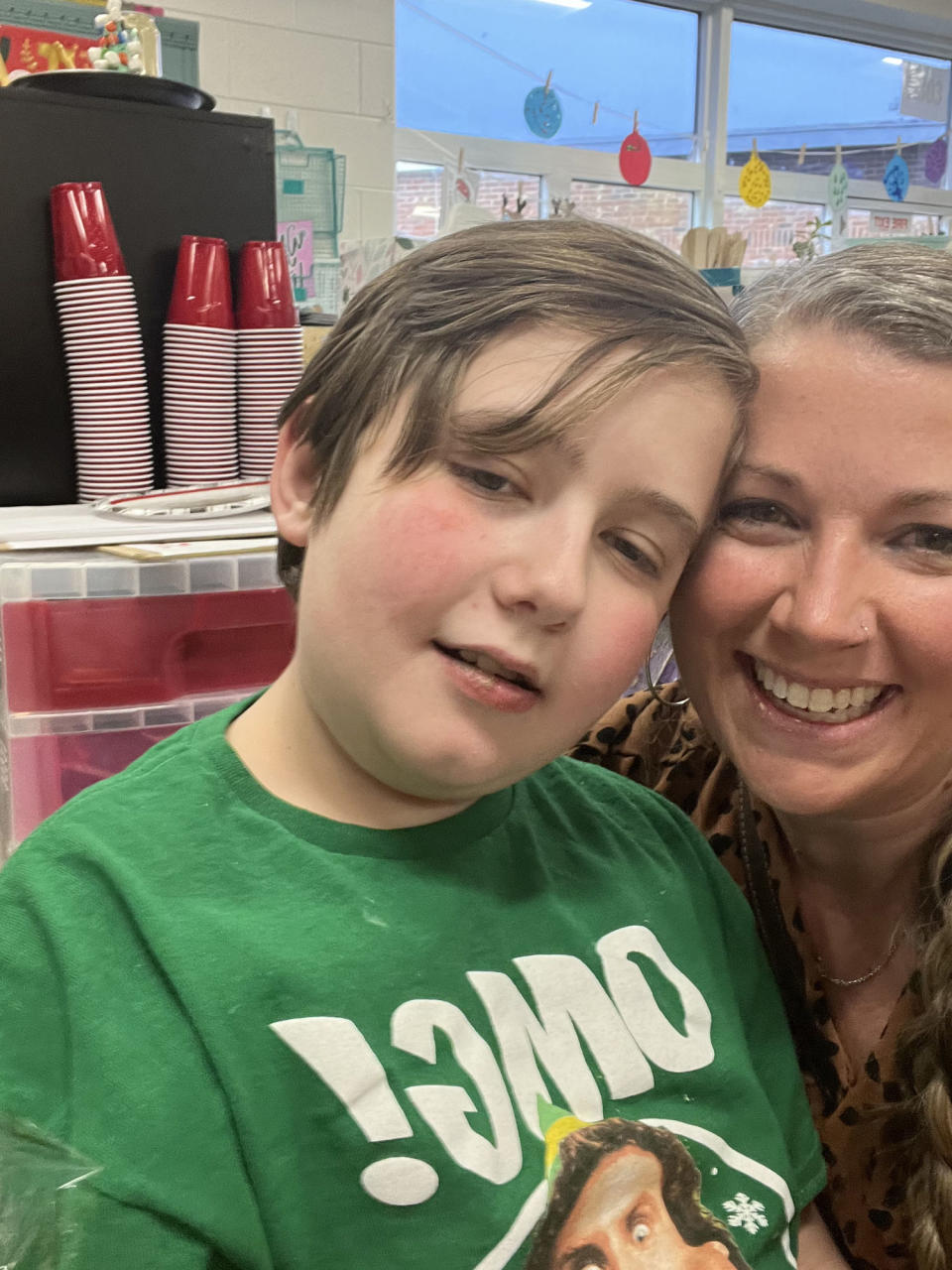Autism may be identified early with eye-tracking device, studies show
A device that follows kids’ eye movements as they watch a video showing a social interaction between two children may help speed up diagnoses of autism spectrum disorder, researchers say.
Data from two new studies, published simultaneously Tuesday in JAMA and JAMA Network Open, suggest that the tablet-based device can identify the disorder in children ages 16 months to 30 months as accurately as a specialist would.
The tool monitors a video viewer’s eye movements at a rate of 120 times a second. It allows specialists to determine moment by moment what social information children are taking in, with typically developing children focusing on the interaction while toddlers with autism gaze at other spots in the video. The results can be available in 30 minutes.
"Currently, autism is diagnosed by a highly trained expert over multiple hours of testing," said the study’s lead author, Warren Jones, director of research at the Marcus Autism Center at Children’s Healthcare of Atlanta and an associate professor in the department of pediatrics at the Emory University School of Medicine. "Unfortunately there aren’t enough of these experts."
Jones is also scientific co-founder and an adviser at EarliTec Diagnostics, which makes the devices.
The shortage of experts means that most specialty centers have long waiting lists, Jones said.
"Identifying children with autism before age 3 is really important," he said. "While treatment can help children thrive at any age, studies have shown that there are better long-term outcomes in children who are identified earlier."
That’s because the younger children’s brains are more “plastic,” meaning they can change more easily.
The American Academy of Pediatrics recommends screening children for autism at 18 months and 24 months. According to the Centers for Disease Control and Prevention, the average age of diagnosis is a little under 4.5 years.
The research that was published in JAMA Network Open describes initial testing of the device on 1,089 children whose average age was 22 months. The JAMA paper reported on a trial performed at six of the country’s leading autism centers. During that trial, 499 children ages 16 to 30 months were first tested with the device and then evaluated by specialists.
Both studies found that the device’s diagnostic abilities were comparable to those of the specialists.
The trials are the culmination of 20 years of research by Jones and his colleagues.
The device, dubbed EarliPoint Evaluation, received Food and Drug Administration clearance on June 29 to be used as a diagnostic tool for children being evaluated by specialists. The researchers are currently studying whether the device might be used by pediatricians and primary care physicians to screen a broader swath of children.
EarliPoint is being used at the Marcus Autism Center, and three other centers are setting up contracts. Other research uses eye tracking to learn more about autism, although no other device is being used by clinicians to aid in diagnosing the disorder, Jones said.
The idea behind the technology is to identify children with autism by picking up on their seeming lack of interest in people. Children typically learn social skills by observing how the people around them interact. The EarliPoint identifies children who aren’t paying much, if any, attention to the kid-to-kid interaction in the video.
If children aren’t learning how to behave from observation, they may never learn. Once kids are identified as having autism, they can get therapy that breaks down social interactions and behaviors into a series of steps and explicitly teaches autistic children what typically developing children pick up on their own without thinking about it, experts say.
For Renee Britt’s little boy Dawson, the therapy seems to be working. Dawson initially seemed to be developing like a typical kid, but then he started regressing just before he turned 2. “All of a sudden, he wouldn’t talk anymore and started struggling,” Britt said.

The boy would have meltdowns when the family tried to go shopping for groceries or was waiting for orders at coffee shops.
Britt signed on for a trial of an earlier version of the EarliPoint. At age 3, Dawson was diagnosed with autism and started therapy. Britt learned strategies to improve Dawson’s tolerance for shopping. They began with very short visits to the store, and the little boy would always get a small toy when the shopping was done. The boy started to associate shopping with a pleasant outcome, and the family was able to make longer and longer trips to the store.
Britt learned to watch for subtle signs that would come before a meltdown. At a pep rally when the music got too loud for him, Dawson covered his ears and started tapping his foot. Britt asked the boy if he was OK. When he said no, she asked him if he wanted to walk around. It worked.
“When he was younger, there would be zero conversation,” she said. “He would just start screaming and trying to run.”
Now 12, Dawson takes some school classes with his typically developing peers. When the family needs to shop, “I can show him our list and he will help us get the things on the list,” Britt said.

Autism specialist Blythe Corbett welcomed the new studies.
“We really need objective tools to assist in our diagnoses,” said Corbett, James G. Blakemore Chair in Psychiatry and Behavioral Sciences and a professor of psychiatry and behavioral sciences at the Vanderbilt University Medical Center.
The current methods are time-consuming “and it would be extremely helpful to identify these kinds of objective biomarkers that the two studies are employing,” said Corbett, who was not involved in the new research.
In about 30% of cases even top specialists aren’t confident of their diagnoses, Corbett said. In those instances, the eye-tracking information could be even more valuable. “Another fascinating aspect of the eye-tracking index is that they are using videos that seem to capture natural social environments a child between 16 to 30 months might be exposed to and learn from,” she added.
The device might one day be used to triage kids so that the most affected ones get fast-tracked to see specialists, as well as speed up diagnoses so children wouldn’t have to wait before they could get therapy, Corbett said.
The new data “are really promising in relation to being able to apply to kids who already have some developmental concerns as well as those in the general population,” said Dr. Jeremy Veenstra-VanderWeele, a professor of psychiatry and director of the division of child and adolescent psychiatry at Columbia University’s College of Physicians and Surgeons.
Veenstra-VanderWeele said the tools would be used for identifying children for further evaluation but aren't diagnostic.
“There are some kids for whom they are highly predictive,” he said, suggesting a follow-up study could determine whether the tool will speed up the diagnostic process.
“This could potentially be very important if it turns out to shape clinical practice,” Veenstra-VanderWeele said.
This article was originally published on NBCNews.com

